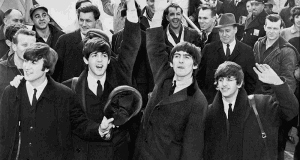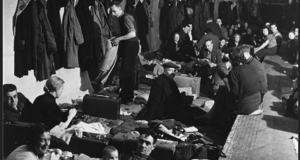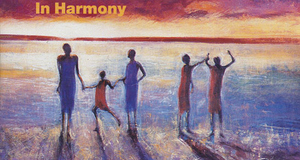What Riot? Punk Rock Politics, Fascism, and Rock Against Racism
By
2012, Vol. 4 No. 01 | pg. 2/2 | « Sabin’s argument should certainly be given credit in so much as it reminds us that generalizing historical events often hides important realities that should not be ignored. His overall condemnation of the new wave however is, in my view, over zealous and somewhat flawed. Firstly, I take issue with Sabin’s own generalization as to the uniform nature of punk’s self-narration as a progressive political movement. Both the groups themselves, as well as the press covering them, heavily criticized the movement and its members as poseurs, fascists or communists, delinquents and so on. This was demonstrated both in the music and in the press. I have already provided a few examples to illustrate this. In addition, see for example, the Sex Pistols songs “Liar” or “Pretty Vacant,” or “I Am a Poseur” by X-Ray Spex. These are just some examples of a wide tradition of satirical attacks on punk fans, who were seen as obsessed with the superficial façade of punk rock. Such songs were echoed for example by NME writers, whose articles frequently contained attacks on the new wave. Julie Burchill and Tony Parsons even went so far as to write a book entitled The Boy Looked at Johnny: The Obituary of Rock and Roll, published in 1978, which heavily criticized new wave bands and the scene that they occupied.12 Whilst there is perhaps a tendency to overstate the moral cleanliness of the movement, particularly in retrospectives such as the aforementioned Joe Strummer film, this is true of almost any new cultural movement that has faced opposition in its time. Furthermore, serious academic works such as accounts of political pop music or accounts of race-relations do not give overly flattering reports of punk’s political orientation and their overall views are mixed.13 Clearly the degree to which the romanticization of punk amounts to an orthodoxy of historical opinion is highly debatable, as one does not have to look very hard to find evidence of criticism both from within the movement or from its onlookers. In responding to the first part of Sabin’s argument, in which he accuses the new wave of selective anti-racism, I would say that an exclusion of Asian immigrants, either by the punk rock bands that spoke out against racism or RAR itself would indeed detract from the movement. Resulting accusations of racism are only one explanation for the absence of an Asian voice amongst those present at RAR or punk concerts alike. Cultural differences could have played a role in this outcome. After all, rock and roll was, at base, a black art form that had grown out of the experience of African slaves in the United States. A natural affinity between black and white variations on this art form is not surprising. Similarly it is neither admirable nor astonishing that youths, even those involved in punk, who had grown up in the same neighborhoods, where the NF had been able to drum up support in the preceding years, might have held views that were xenophobic. Bernie Rhodes’s comments illustrate this. Nevertheless, without contradicting oneself, it is also possible to also argue that it is equally surprising that youths from such a background would end up championing the cause of anti-racism, as many groups within punk did. If Rhodes held views that were racist, his band members were certainly opposed to this, and their influence on the music that they created and the message subsequently disseminated was certainly stronger than his.Overall however, this side of Sabin’s argument is more convincing than the second part, in which he highlights cases of punks openly engaging in racism. He points out efforts on the part of the NF to recruit punk members to its cause, emphasizing for example the Rock Against Communism campaign that was set up apparently in response to RAR. Sabin also cites a list of seemingly racist or Nazi inflected works by punk bands. I do not find this evidence to be particularly compelling. Firstly, as demonstrated by the use of the swastika, punk groups who drew on Nazi, fascist or nationalistic imagery (as illustrated by use of the Union flag) were not necessarily expressing support for such ideas. It would be a particularly obtuse approach, either at the time or in hindsight, that took such artistic outbursts at face value, especially within a cultural movement in which irony was the official currency. Furthermore, most of the groups that Sabin cites as having had a strong connection to racist views are relative unknowns. For instance, Sabin uses the example of NF related bands from Leeds including such ‘illustrious’ names as the Dentists, the Ventz, Crap and Tragic Minds whose lyrics were openly racist and who in 1979 joined with the NF in forming Rock Against Communism. Just as these bands have sunk into obscurity, so too has Rock Against Communism, which was able to raise only a pathetic level of support when compared with its counterpart Rock Against Racism. In addition, Sabin makes repeated reference to Joy Division, whose name was related to Nazism and who utilized associated symbolism. Whilst it is also possible to defend Joy Division with reference to irony and artistic license, I wonder why Sabin mentions them at all, since they were not strictly a part of the original new wave. Lastly, Sabin highlights the often shaky relationship between punk and RAR. Suspicion of RAR’s left-wing origins, coupled with punk’s anti-authoritarian stance is offered in explanation of this. This is hardly surprising given the internal divisions within the punk movement, and yet it does not mean that the relationship between punk and RAR was not a strong one. If, despite giving RAR magazine Temporary Hoarding an interview, the Sex Pistols never played an RAR gig, this may have more to do with the crippling internal problems the group was facing by late 1977, as well as the fact that they were touring in the US during 1978. This is not to mention the support the campaign did receive from prominent punk bands including the Clash, X-Ray Spex, the Buzzcocks, the Tom Robinson Band, Sham 69, the Ruts and the Specials. On the whole, Sabin is correct in stating that punk rock and RAR did not constitute perfect examples of anti-racism. At the same time, it is hard to imagine a movement that realistically could. To counter Sabin’s argument there is a good deal of evidence of anti-facist and anti-racist sentiments from punk groups – not obscure bands from Leeds but major acts – which are still remembered today. The Clash’s “White Riot” displayed admiration for the black immigrant community who were not afraid to “throw a brick” or fight for their own rights. The Strangler’s song “I Feel Like A Wog” criticized inequality and the discrimination faced by immigrant communities. The Specials, one of many multi-ethnic bands that were formed during this period, were largely occupied with anti-racism and made this cause central to their career. When interviewed by Tommy Vance for Capital Radio in 1977, Johnny Rotten stated “no one should be a fascist” in response to questions about punk’s ambiguous use of symbols.14 Throughout their interviews with the music press, the Clash repeatedly expressed their desire to use their music to influence young people against racism and the appeal of the NF.15 It must have been clear to all but the most closed minded people at the time that punk groups were opposed to racism, even if this was imperfectly or unevenly expressed within the movement. This is perhaps the most important point. It is illustrated by Paul Simonon of the Clash who, in a 1978 interview with American fanzine Search & Destroy, stated that the group aimed to “be a top-selling band, which has got something to contribute, which people actually get off on, and which can actually help change people’s attitudes.”16 Though punk began as a subculture, a fringe movement, its music had quickly become extremely popular and a shining example of art as a mass medium, thanks at least in part to the astute business nous of some record companies. If, as music theorist and sociologist Simon Frith argues, music is about “sharing feelings and ideas,”17 and at the same time, rock music operates as a mass medium which is experienced by hundreds of thousands of people almost simultaneously, then it stands to reason that punk and its message had the potential to reach, and therefore influence, a very broad audience. Hence when the Clash played “White Riot” in front of around 100,000 people at an RAR gig in late 1978, this can be viewed as a significant political event that deserves attention. Whilst it is true that the effects or impact of punk, its politics and its relationship with RAR and anti-racism are not clear, there is evidence to suggest that in so far as any cultural movement can influence people’s attitudes, punk did. Whilst this is yet to be quantified, perhaps we can gain a glimpse of it in Sabin’s “orthodoxy:” if for whatever reason Sabin argues, punk is now seen as a movement that championed anti-racism, this must at least in part signify its effect on people from the audiences of the late seventies through later generations to the present. 1.) R. Sabin, “‘I Won’t Let That Dago By:’ Rethinking Punk and Racism,” (1999), in S. Duncombe and M. Tremblay, White Riot: Punk Rock and the Politics of Race, Verso, London, 2011, pp. 57-69. 2.) See for example I. Goodyer, ‘Rock Against Racism: Multiculturalism and Political Mobilisation, 1976-1981’, in Immigrants & Minorities, 22/1 (2003), pp. 44-62. 3.) The question of punk’s political ambiguity was a topic of frequent discussion in the music press. See for example prominent punk critic Lester Bangs’s article on the Clash, which appeared in the NME 10th December 1977. 4.) D. Hebdige, Subculture: The Meaning of Style, Methuen & Co., London, 1979. 5.) Ibid, pp. 66 and 116. 6.) Ibid, pp. 116-117. 7.) For example, in an article for Village Voice that appeared in the 30th April 1977 issue, Lester Bangs criticised punks on both sides of the Atlantic for their casual approach to racism and its symbology. 8.) NME, January 14, 1978, pp. 22-23. 9.) See for example the NME issues 22nd January 1977, pp. 20-21, 10th September 1977, pp. 11., and 8th December 1979, pp. 35. 10.) R. Sabin, op. cit., pp. 62. 11.) Ibid, pp. 68-69. 12.) J. Burchill and T. Parsons, The Boy Looked at Johnny: The Obituary of Rock and Roll, Pluto Press, London, 1978. 13.) See for example P. Gilroy, There Ain’t No Black in the Union Jack, Routledge, London, 1992 or R. Denselow, When The Music’s Over: The Story of Political Pop, Faber & Faber, London, 1989. 14.) Johnny Rotten, interview with Tommy Vance for BBC Capital Radio 1, 15 July 1977. 15.) See NME, 2nd April 1977, pp. 22-23 or 10th December 1977, pp. 31-33. 16.) Paul Simonon, interview with Search & Destroy, San Francisco, 1978 in S. Duncombe and M. Tremblay, White Riot: Punk Rock and the Politics of Race, Verso, London, 2011, pp. 168-170. 17.) S. Frith, Performing Rites: On the Value of Popular Music, Oxford University Press, Oxford, 1996, pp. 251. Suggested Reading from Inquiries Journal
Inquiries Journal provides undergraduate and graduate students around the world a platform for the wide dissemination of academic work over a range of core disciplines. Representing the work of students from hundreds of institutions around the globe, Inquiries Journal's large database of academic articles is completely free. Learn more | Blog | Submit Latest in History |
















